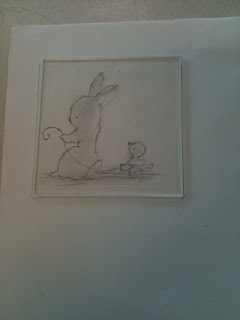‘Collage appeals to children because it is essentially about transformation: torn strips of paper could become an autumn landscape, while Frankenstein’s monster might emerge from the contents of a rubbish bin.’ (Cole, S. et al) This quote sums up the appeal of collage to me, that children can use anything from recycled materials to painted tissue paper created deliberately for the purpose of collaging with. To create our own collages we inked tissue paper to create the desired colours needed and then continued to tear the paper to create desired shapes. Another appeal of collage is that it is an inclusive technique and you do not need to be the best at drawing or painting. Therefore it may give children within your class the freedom to experiment with shape, texture and colour without the need to make their picture look ‘right’. Being an inclusive side of art this may mean that it would be suited to not only younger children who will be learning through play and experime...




